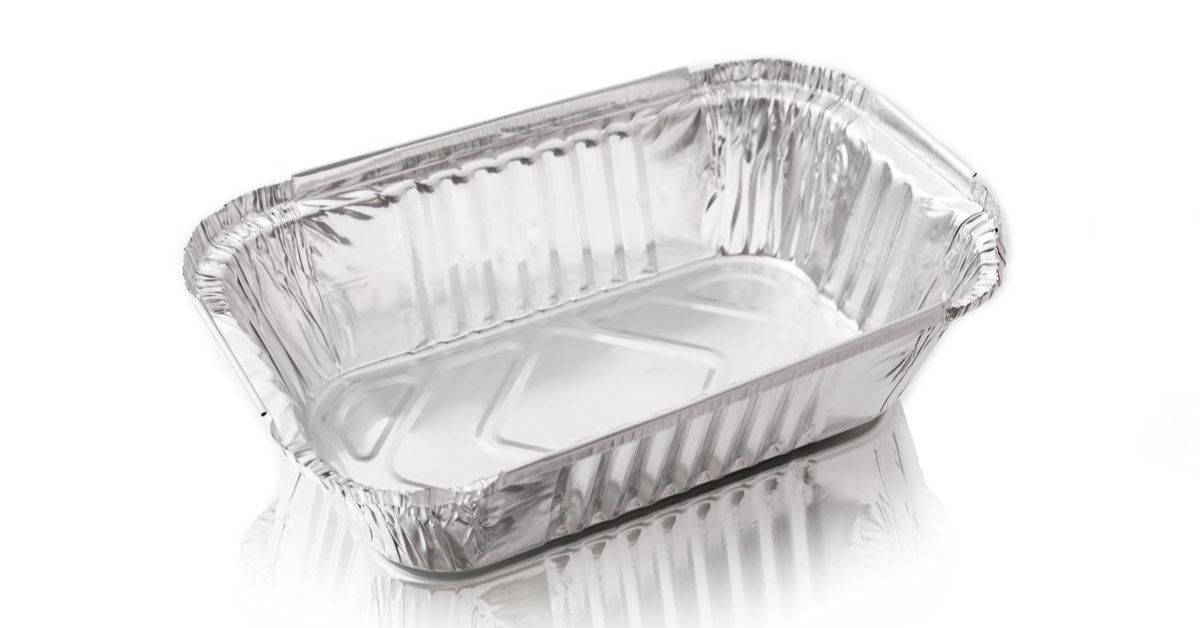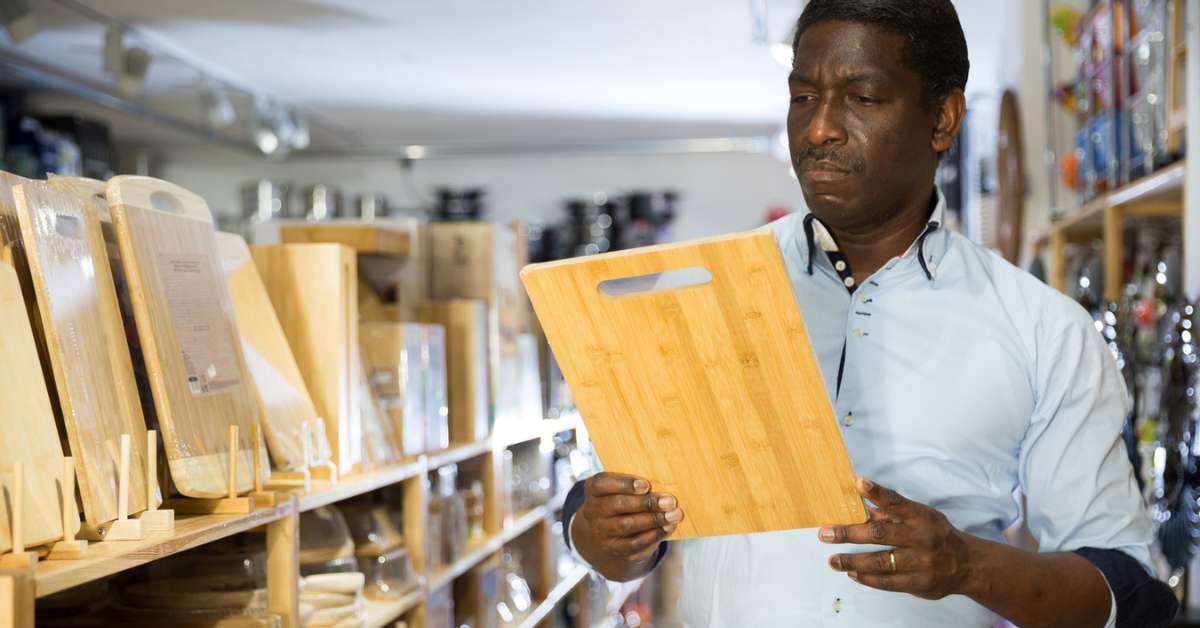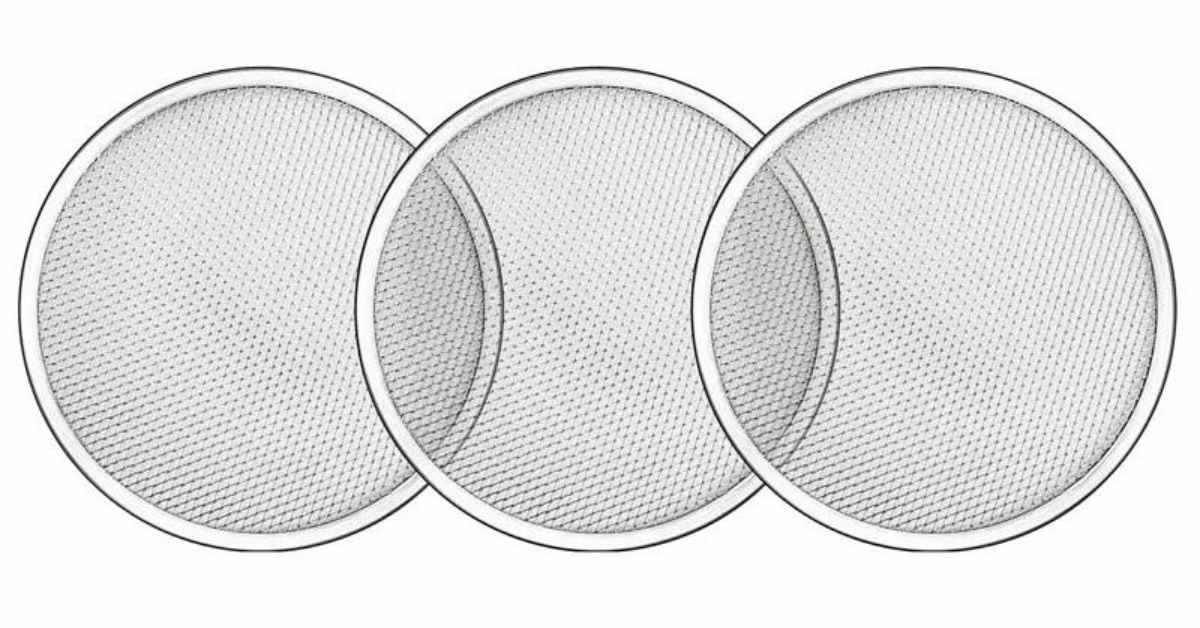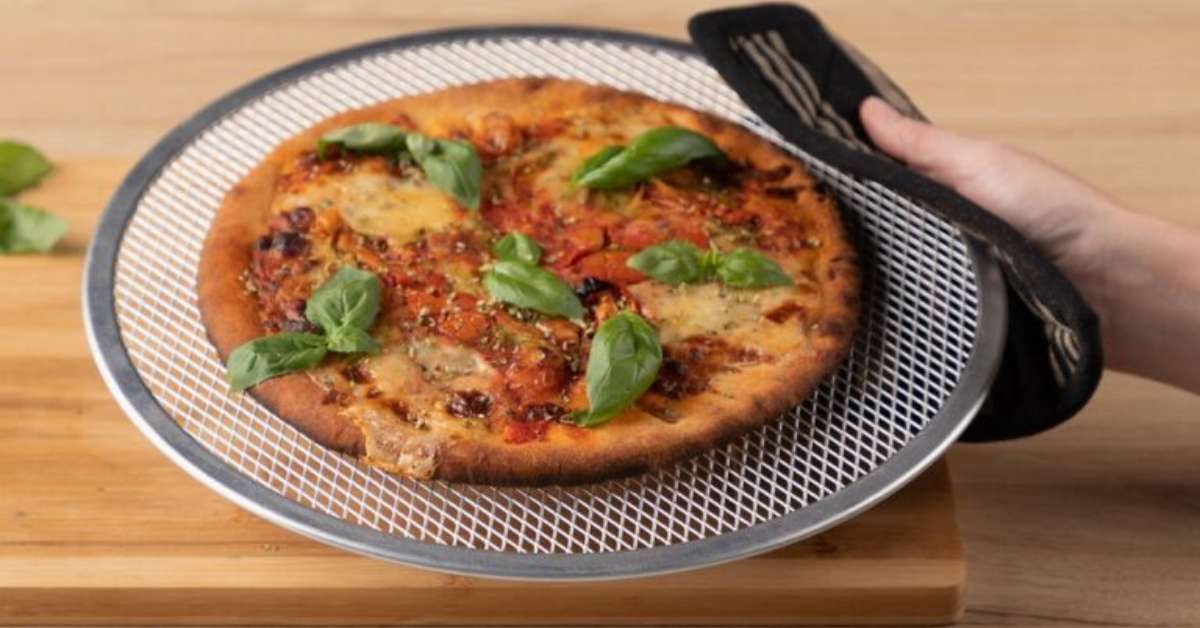Welcome to our blog post, “Can You Fry in Aluminum Foil Pans? Explored Everything 2023.” In this article, we delve into the fascinating world of cooking and explore whether it is possible to fry food using aluminum foil pans. Aluminum foil pans have gained popularity in recent years due to their convenience and versatility in the kitchen.
However, when it comes to frying, certain factors must be considered to ensure both safety and optimal cooking results. Join us as we uncover the truth behind using aluminum foil pans for frying and provide you with valuable insights and tips for a successful cooking experience. Let’s get started and determine if frying in aluminum foil pans is viable or best avoided.
Table of Contents
ToggleUnderstanding What Are Aluminum Foil Pans
Aluminum foil pans are versatile and convenient cooking utensils made from thin aluminum sheets. These pans are commonly used in various culinary applications, from baking and roasting to storing and transporting food. The aluminum foil in these pans provides excellent heat conductivity, allowing for even cooking and browning of the food.
Aluminum foil pans are disposable containers made from aluminum foil. They come in various shapes and sizes, such as rectangular, round, and square, catering to different cooking needs. These pans are typically lightweight and have a shallow depth, making them suitable for various cooking tasks.
The different types of aluminum foil pans
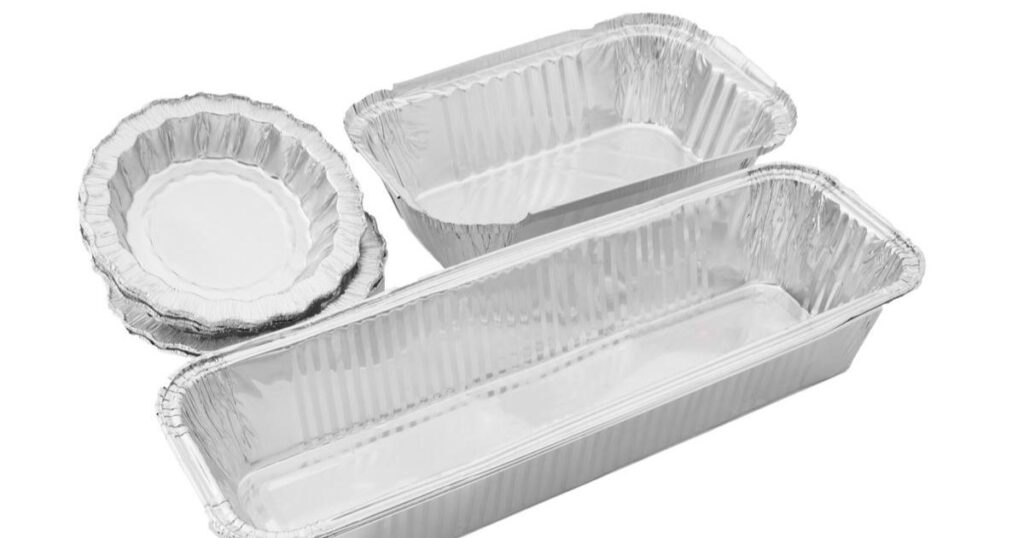
Aluminum foil pans come in different types to accommodate specific cooking requirements. Some common variations include:
Baking pans: These are ideal for baking cakes, cookies, and other pastries. They are available in various sizes to suit different baking needs.
Roasting pans: Designed with higher sides and sturdy construction, roasting pans are perfect for roasting meats and vegetables in the oven. They can withstand high temperatures and retain heat efficiently.
Casserole pans: Casserole pans are more profound and can hold larger quantities of food. They are commonly used for cooking casseroles, lasagnas, and other layered dishes.
Advantages and Disadvantages of Aluminum Foil Pans
Like any cooking utensil, aluminum foil pans come with their own set of advantages and disadvantages. Let’s explore them below:
Advantages:
- Convenience: Aluminum foil pans are disposable, eliminating the need for cleanup after use. This makes them popular for picnics, parties, and other outdoor events.
- Heat conductivity: Aluminum foil pans distribute heat evenly, ensuring consistent cooking results. They help in achieving proper browning and doneness of the food.
- Versatility: These pans can be used for various cooking tasks, including baking, roasting, and reheating. They are suitable for both sweet and savory dishes.
Disadvantages:
- Durability: While aluminum foil pans are convenient, they are not as durable as traditional cookware. They can dent or bend easily, especially if subjected to rough handling.
- Limited reusability: Unlike regular pans, aluminum foil pans are designed for single use. They are not recommended for repetitive use as they may lose shape and integrity.
- Risk of aluminum leaching: When exposed to certain acidic or salty foods, aluminum foil pans may release small amounts of aluminum into the food. While this is generally considered safe, avoiding prolonged contact between acidic foods and aluminum foil is advisable.
Now that we have a better understanding of what aluminum foil pans are let’s explore the topic of frying in these pans and whether it is a viable option.
How to Cook with Aluminum Foil Pans
Aluminum foil pans offer a convenient and efficient way to cook various dishes. Whether baking, roasting, or grilling, these pans can be your reliable kitchen companion. Here, we will explore some essential cooking techniques to help you make the most out of your aluminum foil pans.
Before you start cooking, preparing the aluminum foil pan properly is crucial. Begin by lightly greasing the pan’s surface to prevent food from sticking. This step is crucial when baking or roasting delicate items like fish or chicken breasts.
Baking and Roasting
When using aluminum foil pans for baking or roasting, there are a few key considerations to keep in mind:
- Temperature: Aluminum foil pans can withstand high oven temperatures, typically up to 450°F (232°C). However, always refer to the manufacturer’s instructions for specific temperature limits.
- Even Heat Distribution: Place the aluminum foil pan on a sturdy baking sheet to ensure even cooking. This helps distribute heat evenly and prevents the pan from warping.
- Handling Liquid: If you’re cooking a dish with a liquid or sauce, be cautious when transferring the pan in and out of the oven. Aluminum foil pans are generally not as sturdy as traditional cookware, so supporting the bottom with both hands is essential to avoid spills or accidents.
Grilling and Barbecuing
Aluminum foil pans can also be used for grilling and barbecuing, providing a convenient alternative to traditional grill grates. Here are a few tips for successful grilling with aluminum foil pans:
- Heat Resistance: Ensure the aluminum foil pan is designed for high-heat cooking. Look for pans labeled “grill-safe” or “barbecue-safe” to ensure they can withstand the grill’s direct heat.
- Poking Holes: When using aluminum foil pans for grilling, it’s essential to create tiny holes in the bottom of the pan. These holes drain excess grease and fat, preventing flare-ups and promoting healthier cooking.
- Food Placement: Arrange the food in a single layer on the aluminum foil pan to ensure even cooking. This allows the heat to circulate properly and helps achieve that desirable grilled flavor.
While cooking with aluminum foil pans is convenient, following safe handling practices and maintaining proper food hygiene is essential. Always check the manufacturer’s instructions for specific usage guidelines and limitations.
You can also read the following: The Dimensions of a Brisket and How to Choose the Perfect Cut
The Safety of Cooking with Aluminum Foil Pans
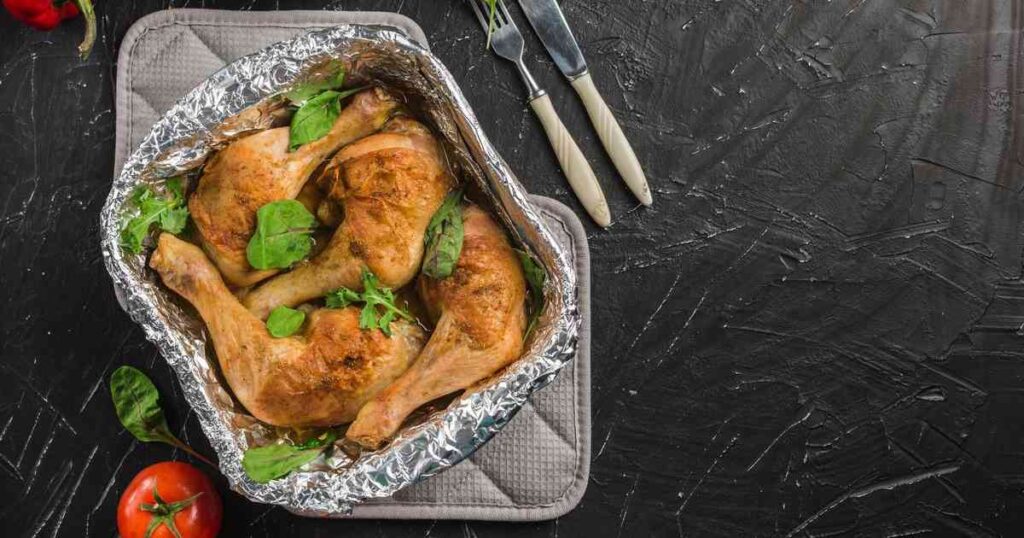
When cooking with aluminum foil pans, ensuring safety is of utmost importance. While these pans are widely used and convenient, one must know specific considerations to minimize potential risks. Let’s delve into the safety aspects of cooking using aluminum foil pans.
Heat Conductivity and Hot Surfaces:
Aluminum foil pans conduct heat efficiently to become hot during cooking. When handling these pans, using oven mitts or heat-resistant gloves to protect your hands from burns is crucial. Exercise caution when removing hot pans from the oven or grill to avoid accidental injuries.
Acidic and Salty Foods:
Aluminum foil pans can interact with certain acidic or salty foods, potentially leading to a transfer of small amounts of aluminum into the food. While the levels are generally considered safe, avoiding prolonged contact between highly acidic or salty ingredients and aluminum foil is advisable. Line the pan with parchment paper before adding the food to minimize potential risk.
Avoiding Metallic Utensils:
To prevent scratching or damaging the surface of aluminum foil pans, it’s recommended to use non-metallic utensils when cooking or serving. Metal utensils can scrape the pan’s surface, potentially causing small aluminum flakes to mix with the food.
Proper Disposal and Recycling:
Aluminum foil pans are designed for single use and not for extensive reuse. After cooking, ensure that you dispose of the pans responsibly. Check your local recycling guidelines to determine if aluminum foil pans can be recycled. If recycling is not an option, discard them in appropriate disposal containers.
Allergen Cross-Contamination:
If you’re cooking for individuals with food allergies or sensitivities, it’s essential to be mindful of potential cross-contamination. Aluminum foil pans can retain traces of allergenic substances if they have been previously used for cooking allergenic foods. To prevent cross-contamination, thoroughly clean and sanitize the pans before using them for different dishes.
By being aware of these safety considerations and taking necessary precautions, you can enjoy the convenience and versatility of aluminum foil pans while ensuring a safe cooking experience.
It’s important to note that the safety guidelines provided here are general recommendations. Always refer to the specific instructions and guidelines provided by the manufacturer of the aluminum foil pans you’re using for accurate and up-to-date information regarding their safety and usage.
Can You Fry in Aluminum Foil Pans
One common question when using aluminum foil pans is whether they can be used for frying. Frying typically involves submerging food in hot oil, and it’s natural to wonder if aluminum foil pans are up to the task. The answer is both yes and no. While aluminum foil pans can handle some frying tasks, it’s essential to consider their limitations.
For shallow frying or sautéing, aluminum foil pans can work well. Their excellent heat conductivity allows for even heat distribution, helping achieve crispy and golden results. However, it’s crucial to be mindful of the depth of the pan. Aluminum foil pans are generally shallow, so they may not hold the large volume of oil required for deep frying.
When it comes to deep frying, it’s advisable to opt for dedicated deep fryers or sturdy, deep pots specifically designed for the task. The high temperatures and larger quantities of oil involved in deep frying demand more substantial cookware that can withstand the heat and contain the oil securely. Aluminum foil pans may not have the depth or sturdiness to handle deep frying safely.
Additionally, it’s essential to exercise caution and follow safe frying practices when using aluminum foil pans. Ensure the pan is stable on the heat source, and avoid overcrowding the pan with food to maintain an even frying temperature. Monitor the oil closely and ensure it is secured to prevent accidents.
Ultimately, while aluminum foil pans can be a convenient option for shallow frying or sautéing, assessing the specific frying task and choosing the appropriate cookware accordingly is essential. Considering the limitations and using them within their intended capabilities, aluminum foil pans can still be valuable for various cooking methods.
Alternatives to Aluminum Foil Pans for Frying
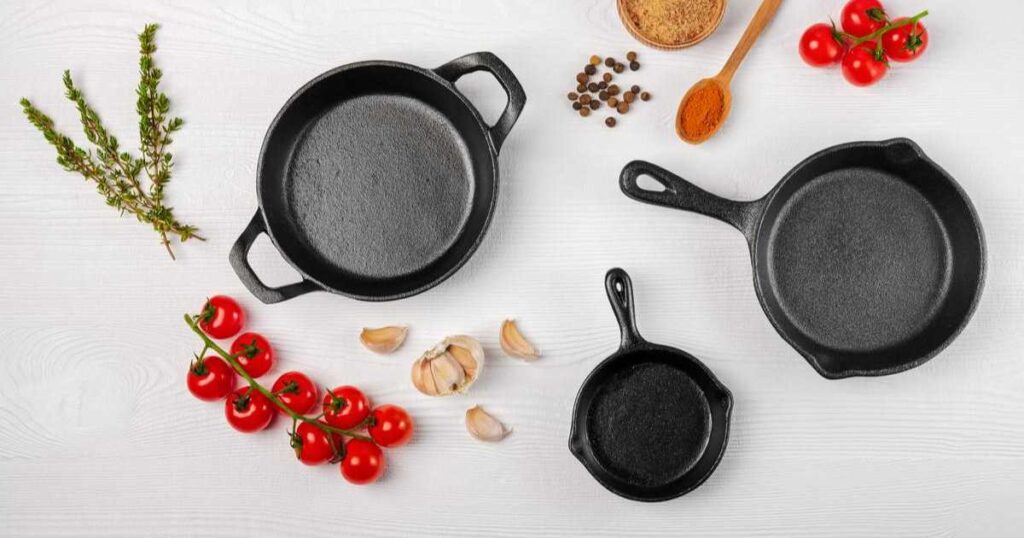
If you’re looking for alternatives to aluminum foil pans for frying, several options can provide better heat retention and sturdiness. These alternatives offer greater versatility and durability, allowing you to fry food confidently. Let’s explore some popular alternatives to consider:
Cast Iron Skillets
Cast iron skillets are renowned for their excellent heat retention and even distribution. They are ideal for frying because they maintain a consistent temperature throughout cooking. Cast iron skillets can handle high heat and provide a desirable crispy texture to fried foods. Additionally, they are durable and can be used on various heat sources, including stovetops and ovens.
Stainless Steel Pans
Stainless steel pans are another excellent option for frying. They offer durability and resistance to high temperatures, making them suitable for deep frying. Stainless steel pans typically have a thick bottom that helps distribute heat evenly. They are also non-reactive, ensuring that the flavors of your food remain pure.
Carbon Steel Woks
Carbon steel woks are a traditional choice for stir-frying but can also be used for deep frying. Works have a unique shape, allowing for efficient heat distribution and ingredient tossing. They are lightweight, durable, and can withstand high heat, making them a versatile option for frying various types of food.
Dutch Ovens
Dutch ovens are heavy-duty pots with thick walls and tight-fitting lids, perfect for deep frying. They are typically made of cast iron or enameled cast iron, which ensures excellent heat retention and even cooking. Dutch ovens can be used on stovetops and ovens, offering versatility in cooking techniques.
Deep Fryers
Investing in a dedicated deep fryer is worth considering for those who frequently engage in deep frying. Deep fryers are specifically designed for frying, offering precise temperature controls and features like built-in filters to remove odors and maintain the quality of the oil. They provide convenience and ensure consistent results when frying various foods.
You can enhance your frying experience and achieve optimal results by choosing these alternatives to aluminum foil pans. Consider the specific frying needs, the type of food you intend to fry, and your preferred cooking methods when selecting the most suitable cookware for your kitchen.
How to Clean and Maintain Aluminum Foil Pans
Proper cleaning and maintenance of aluminum foil pans ensure longevity and hygienic use. Although aluminum foil pans are disposable, you can extend their lifespan and make the most out of each use by following these simple cleaning and maintenance tips:
Cool Down Before Cleaning: Allow the aluminum foil pan to cool down completely before cleaning it. This prevents burns and ensures a safer cleaning process.
Remove Excess Food and Grease: Remove excess food or grease residues before washing the pan. Scrape off solid food particles with a spatula or a soft brush, and dispose of them in the appropriate waste container.
Hand Washing Method: Aluminum foil pans are generally not suitable for dishwashers. It is recommended to wash them by hand. Fill a basin or kitchen sink with warm water and mild dish soap. Gently soak the pan in soapy water, allowing it to loosen any remaining food particles.
Gentle Scrubbing: Using a soft sponge or cloth, gently scrub the inside and outside surfaces of the aluminum foil pan. Avoid using abrasive scrubbers or harsh cleaning tools, as they can scratch or damage the pan’s surface.
Rinse Thoroughly: Once the pan is clean, rinse it thoroughly under warm running water to remove any soap residue. Ensure all soap is washed away, as it can affect the taste of future foods cooked in the pan.
Air Dry or Towel Dry: After rinsing, you can air dry the pan by placing it upside down on a drying rack or using a clean towel to dry it manually. Ensure the pan is completely dry before storing it to prevent moisture-related issues like rust or mold.
Storage and Organization: Stack them neatly in a dry and cool area when storing aluminum foil pans. Avoid placing heavy items on top of them to prevent deformation. Consider using a storage container or drawer designated for these pans to keep them organized and readily accessible.
By following these cleaning and maintenance practices, you can keep your aluminum foil pans in good condition for reuse and minimize the risk of contamination in your future cooking endeavors. Remember, while aluminum foil pans are convenient for single-use, proper care and hygiene practices can help you maximize their lifespan.
Conclusion
Aluminum foil pans serve as convenient and versatile tools in the kitchen, offering various uses for cooking, baking, and serving food. Understanding their capabilities and limitations is critical to making the most of these pans. We explored the different types of aluminum foil pans, their advantages and disadvantages, and cooking techniques and safety considerations when using them.
We also discussed alternatives for frying and provided tips on cleaning and maintaining aluminum foil pans. Aluminum foil pans can be valuable assets in your culinary adventures when used appropriately and adequately.
FAQs
Is it safe to cook with aluminum foil pans?
Yes, it is generally safe to cook with aluminum foil pans. However, there are some considerations to remember, such as avoiding highly acidic or salty foods and not using them for long-term food storage. The risk of harmful aluminum intake is minimal by following safe cooking practices.
Can I reuse aluminum foil pans?
While aluminum foil pans are designed for single use, they can often be reused with proper cleaning and care. However, excessive reuse may cause the pans to become weak or deformed, reducing their effectiveness. It’s recommended to assess the condition of the pan and consider using a new one when necessary.
How do I know when my aluminum foil pan needs to be replaced?
You may need to replace your aluminum foil pan if it becomes deformed, shows signs of wear or tear, or if the integrity of the pan is compromised. Additionally, if the pan develops holes or significant damage, it is advisable to replace it to ensure safe and effective cooking.
Can I put aluminum foil pans in the oven?
Yes, aluminum foil pans are oven-safe and can be used for baking, roasting, and other oven-cooking methods. Most pans can withstand temperatures up to 450°F (232°C). However, always refer to the manufacturer’s instructions for specific temperature limits for aluminum foil pans.
Can you fry food in aluminum pans?
Aluminum foil pans can handle shallow frying or sautéing tasks well. Their heat conductivity allows even heat distribution, resulting in crispy and golden outcomes. However, for deep frying, it is advisable to use dedicated deep fryers or sturdy, deep pots specifically designed for the task.

